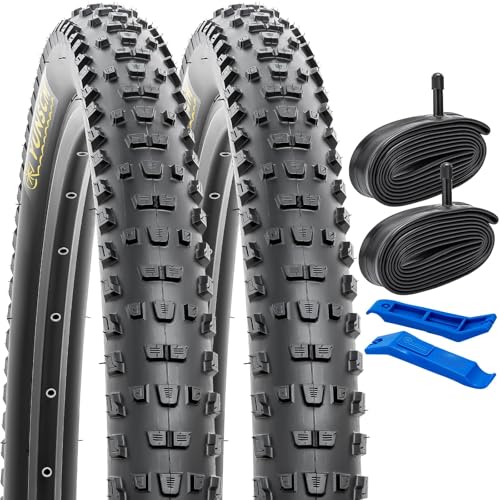Understanding 29-inch Mountain Bike Tyres: What Do We Need to Know?
The Basics of 29-inch Mountain Bike Tyres
29-inch mountain bike tyres are designed for those who seek a balance of speed and traction on various terrains. When considering these tyres, we should note that their larger diameter helps roll over obstacles more easily compared to smaller sizes. This means improved performance on rocky paths and roots. The increased size also provides better momentum, allowing riders to maintain speed with less effort. For many cyclists, this makes 29-inch tyres an attractive option.
Tyre Width and Volume Explained
The width of a tyre plays a crucial role in its performance, and 29-inch tyres typically range from 2.1 to 2.6 inches. A wider tyre generally offers better grip and stability, especially on loose surfaces, while a narrower tyre can be lighter and faster on hard-packed trails. We should consider how much volume we need as well; a tyre with more volume can be run at lower pressures for added comfort and traction, making rides smoother overall.
Choosing the Right Tread Pattern for Your Riding Style
Understanding Different Tread Patterns
Tread patterns on mountain bike tyres can significantly affect handling and performance. If we ride predominantly on hard and smooth trails, a tyre with a low-profile tread will provide speed and efficiency. Conversely, if our rides take us through muddy or loose terrains, opting for tyres with deeper lugs can improve traction. We should assess our common riding environments to ensure we choose a tread pattern that complements our style.
Specific Treads for Specific Conditions
For rocky conditions, look for tyres that have a tougher, more aggressive tread pattern for better grip. In contrast, if our trails are primarily dry and hard, a slicker design will offer reduced rolling resistance, making climbing easier. If we cycle in mixed conditions, consider a tyre with a versatile tread that can adapt to both muddy and dry trails.
Material Matters: Which Tyre Compound Is Best for You?
Different Types of Rubber Compounds
Tyre compounds play a vital role in determining grip, durability, and overall performance. Softer compounds generally provide better traction but may wear out quicker, while harder compounds last longer and offer more resistance to punctures. For our needs, if we’re frequent trail riders, a soft compound would provide the grip needed for various surfaces. Alternatively, if we prefer longer road rides, a harder compound might suit our style better.
Comparing Dual and Triple Compound Options
Some mountain bike tyres utilise dual or even triple compound designs, where varying hardness levels are used in different sections of the tyre. The softer compound on the sidewalls may enhance cornering grip, while the harder centre offers lower rolling resistance. If we’re looking to maximise performance across diverse terrains, these advanced materials could be worth considering.
Comparing Price Ranges: What Can We Expect at Each Level?
Budget-Friendly Options
When scanning the market, budget tyres typically range from £30 to £50. These tyres can be suitable for casual riders or those who cycle occasionally. However, we may find that some compromises are made regarding grip and durability. While they can perform adequately for light trail rides, frequent users might want to explore mid-range options.
Mid-Range to High-End Tyres
Mid-range tyres often fall between £50 and £80 and offer a good balance of performance and price. They generally feature better materials and improved tread designs, making them ideal for regular riders who desire durability and performance. High-end tyres, priced upwards of £80, offer the best technology and materials, providing top-tier performance for serious mountain bikers. They may also include features like puncture resistance and enhanced grip, justifying the higher price.
Installation and Maintenance Tips for Optimal Performance
Best Practices for Tyre Installation
Installing 29-inch mountain bike tyres requires attention to detail. Ensure the rim and tyre are compatible, as this significantly affects performance. It’s best to use a floor pump or compressor to make installation easier, particularly if you’re using tubeless tyres. Properly seating the bead will prevent leaks and ensure a snug fit.
Routine Maintenance for Longevity
To keep our tyres in optimal shape, check the air pressure regularly, as low pressure can lead to pinch flats. Inspect the tread for signs of wear or embedded debris that may compromise performance. Cleaning the tyres from mud and grime will also prolong their life and efficacy. Additionally, regularly checking for damage and replacing tyres when necessary will enhance safety on our rides. By giving attention to these details, we can ensure that our 29-inch tyres perform at their best, no matter the terrain.


























